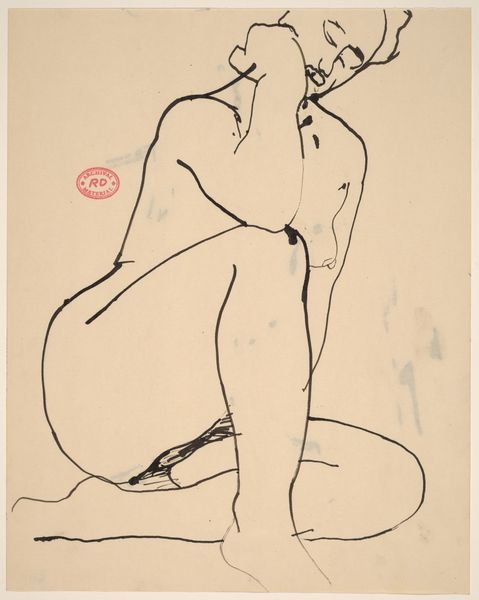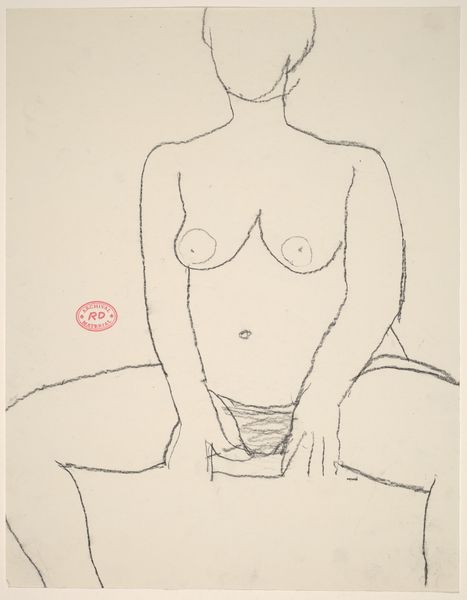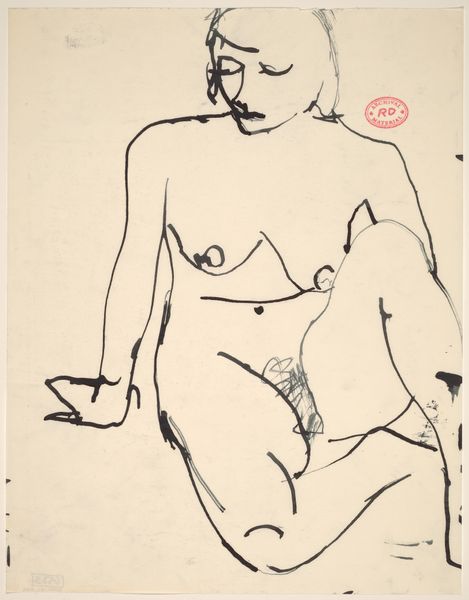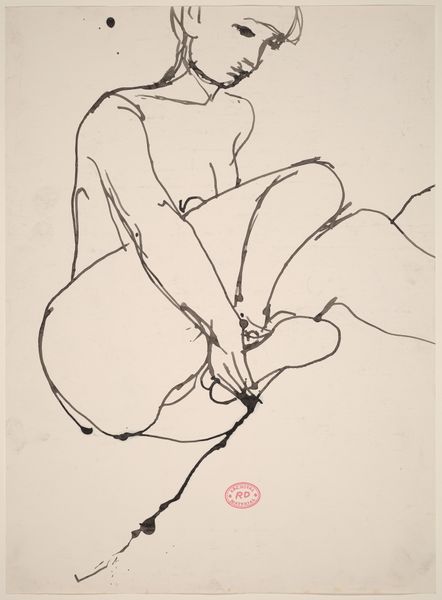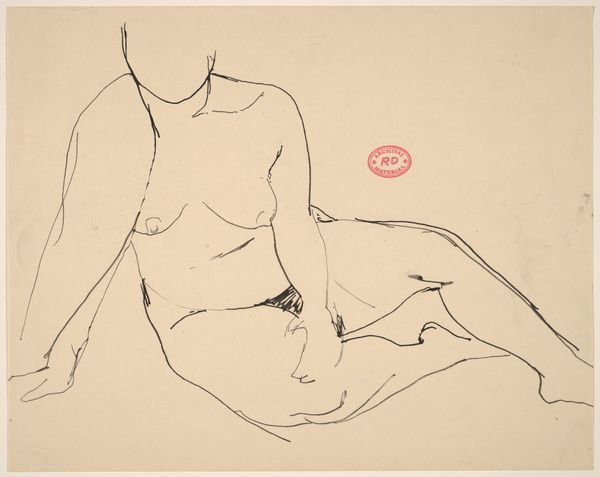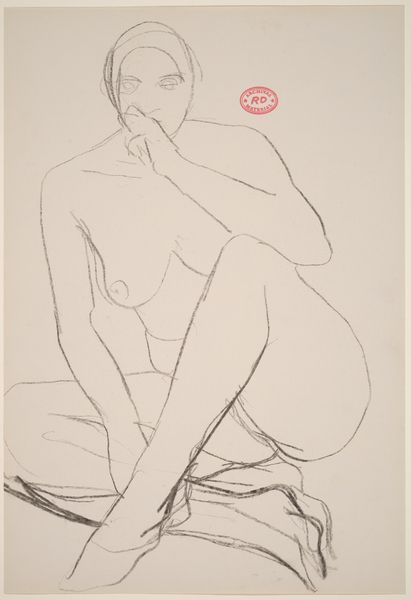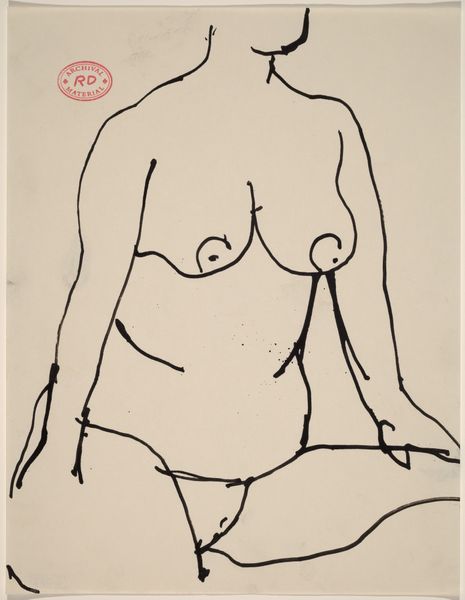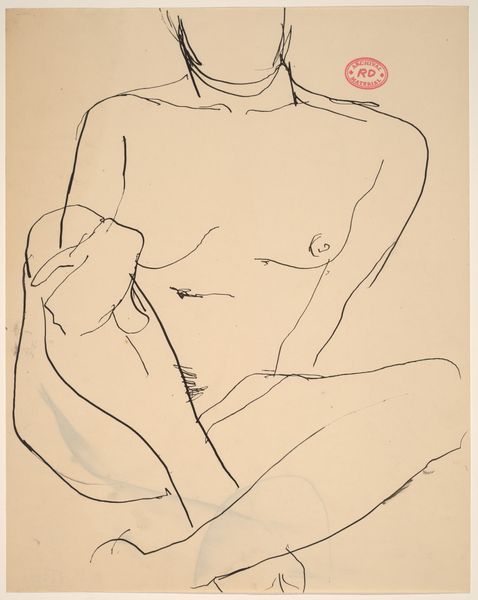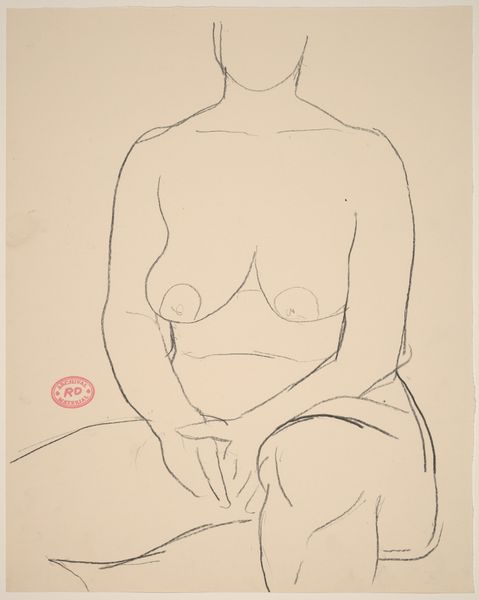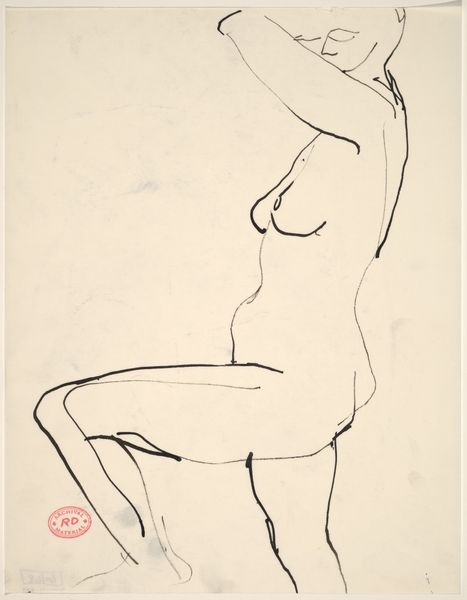![untitled [female nude with right arm across chest] by Richard Diebenkorn](/_next/image?url=https%3A%2F%2Fd2w8kbdekdi1gv.cloudfront.net%2FeyJidWNrZXQiOiAiYXJ0ZXJhLWltYWdlcy1idWNrZXQiLCAia2V5IjogImFydHdvcmtzLzJiNDAxM2E2LTBlNTYtNDYxNy04N2Y0LTJhYmM4YWM4OTNiNC8yYjQwMTNhNi0wZTU2LTQ2MTctODdmNC0yYWJjOGFjODkzYjRfZnVsbC5qcGciLCAiZWRpdHMiOiB7InJlc2l6ZSI6IHsid2lkdGgiOiAxOTIwLCAiaGVpZ2h0IjogMTkyMCwgImZpdCI6ICJpbnNpZGUifX19&w=3840&q=75)
untitled [female nude with right arm across chest] 1955 - 1967
0:00
0:00
drawing, ink
#
portrait
#
drawing
#
ink drawing
#
pencil sketch
#
figuration
#
bay-area-figurative-movement
#
ink
#
nude
Dimensions: overall: 43.2 x 27.9 cm (17 x 11 in.)
Copyright: National Gallery of Art: CC0 1.0
Editor: This is Richard Diebenkorn's "untitled [female nude with right arm across chest]," an ink drawing done sometime between 1955 and 1967. I’m immediately struck by the stark simplicity, and how much the seemingly incomplete lines suggest. How do you interpret this work, especially within its historical context? Curator: It's crucial to remember that Diebenkorn was working in a period dominated by abstract expressionism, yet here he offers us the figure. How does this challenge, or perhaps expand, traditional representations of the female nude, often defined by the male gaze? Editor: It feels less about objectification, more about… capturing a fleeting moment? A private act of observation, maybe. Curator: Exactly. And this “private act” resists the prevailing trends in art towards complete abstraction and the bravado of the New York School, which was perceived as hyper-masculine. How might this embrace of vulnerability, a quiet interiority, serve as a counter-narrative, particularly in the context of Cold War anxieties and gendered expectations? Think of how female artists were struggling for recognition then. Editor: So, in a way, the very act of drawing a nude like this becomes a kind of… statement? Against both artistic and societal norms? Curator: Precisely! Diebenkorn’s line isn't about idealization; it's about grappling with representation itself. Do you see the influence of artists like Matisse? Consider the politics embedded even in seeming aesthetic choices. This “unfinished” quality… does it reinforce ideas about the changing perception of the female body? Editor: It does give a sense of freedom... Thank you, I didn't initially think of it that way. I’ll be more aware of art’s relation to the artists' environment from now on. Curator: Art becomes even more powerful when we see how social dynamics shape an artist’s representation.
Comments
No comments
Be the first to comment and join the conversation on the ultimate creative platform.
